How to choose and equip a terrarium for Achatina snails?
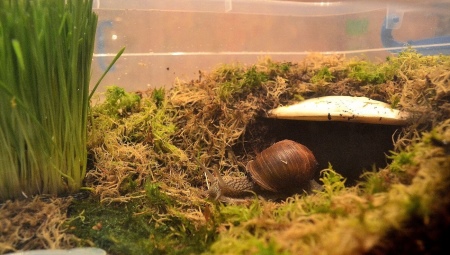
Achatina snails are often chosen for the role of pets. Having decided to settle these giant mollusks in the apartment, you should definitely figure out the issue of their placement and choose the right aquarium for them.
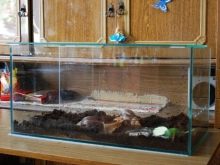

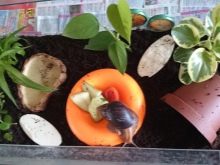
Choice of capacity
A terrarium for Achatina snails is necessary, since in nature creatures live in warm areas, and therefore temperature fluctuations can be fatal for them. An aquarium or container will keep the atmosphere stable. Usually, for Achatina, either a standard aquarium for fish is purchased, or a terrarium for reptiles, or a regular plastic containerwith transparent walls and a removable cover. The terrarium is considered the most convenient, but aquarium tanks will also provide the necessary temperature and ventilation. The tank must have such a volume that there is at least 15 liters of free space per individual.
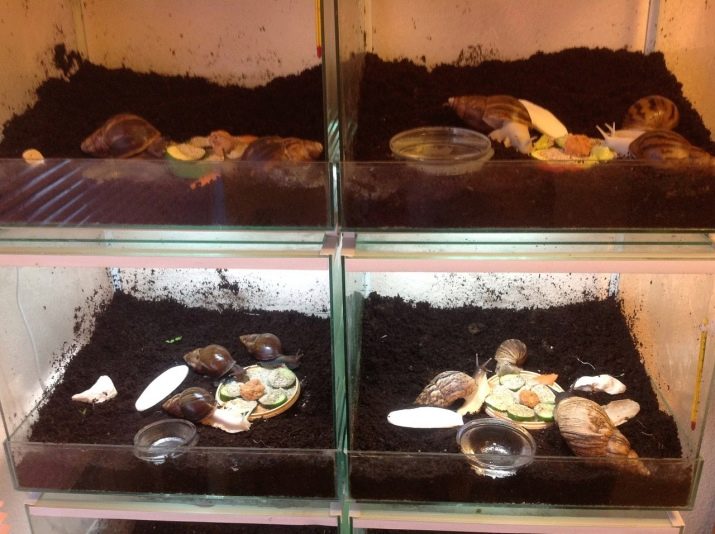
Moreover, you will have to take into account that Achatina grow over time and an aquarium that is too small can become cramped after a certain period.
The lid must have openings to provide adequate ventilation without which the snails will perish. In general, you cannot do without shelter, since the pets may well run away. The optimal size is considered a container, the length and width of which are at least 30 centimeters, and the height ranges from 17 to 22 centimeters. A round aquarium for Achatina is not welcome. In general, the more spacious the reservoir is as a result, the more comfortable the pets will be.
For a newly born clam, you can use a regular food container., and after some time already transplant it into a 15-liter tank. You should not take a vertical type container - it should be wide, but not high. Otherwise, snails crawling onto the roof run the risk of falling off and severely injured.
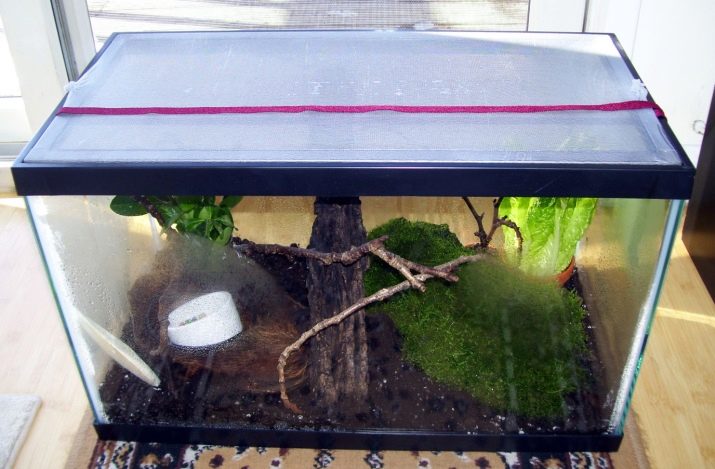
However, a height below 17 centimeters is not considered successful, since an adult may become cramped in it or it will simply get stuck while moving.
The main materials for snail dwellings are plastic and glass. But experts do not really advise taking glass containers. The Achatina snail is characterized by fragility, and the fall of the shell on a hard surface can be fatal for it. The constant interaction of the shell and the walls of the tank of an already grown creature is also not very comfortable. In addition, the glass slides, and the adult will experience stress from the constant sliding off the walls. The heaviness of the reservoir itself makes cleaning difficult. Of course, glass is an environmentally friendly material that keeps its cleanliness longer, but this advantage alone does not outweigh the number of disadvantages.
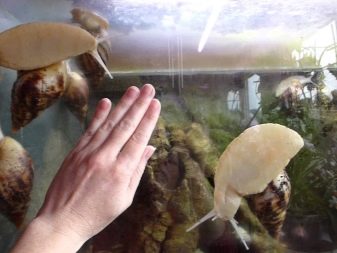
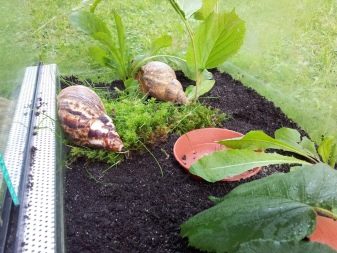
Plastic is much more convenient to use. The lightness of the container allows it to be installed in any chosen place, quickly cleaned and moved in space.
The snail will not damage the shell if it falls, especially if there is soil at the bottom. Of the minuses of plastic, one can single out less environmental friendliness and a less aesthetic appearance. If a container is chosen as a dwelling for Achatina, then it must necessarily be food.
This can be determined by the presence of the designation "for food" and the placement of a special sign on the bottom of the container. The lid should be hermetically sealed, ideally with latches. It is important that the insides are free of any sharp corners, edges or joints. All sharp fragments are pre-cut and sanded. And of course, it is better to choose transparent plastic - this will make the snail more comfortable, and the owner will be able to watch his pet at any time.
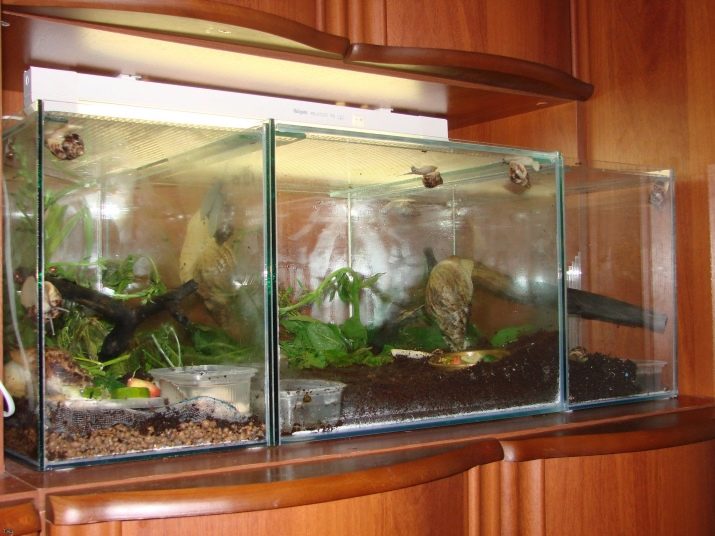
How to make ventilation?
Achatina plants need moisture and a constant supply of fresh air to grow and develop, which also reduces the likelihood of mold, rot and disease. It is not difficult to organize the ventilation system with your own hands. - it is enough to simply drill holes in the container on the roof and sidewalls. The holes should be correctly positioned so that on one side they are located in the upper part, and on the other - in the lower part. As a result, the temperature inside the tank should be between 24 and 27 degrees Celsius. The holes should not be too large, as the wide diameter threatens excessive evaporation and therefore changes in humidity levels.
The easiest way to pierce the holes is with a regular awl, preheated over a gas stove. You should focus on a hole with a diameter of 3 millimeters.
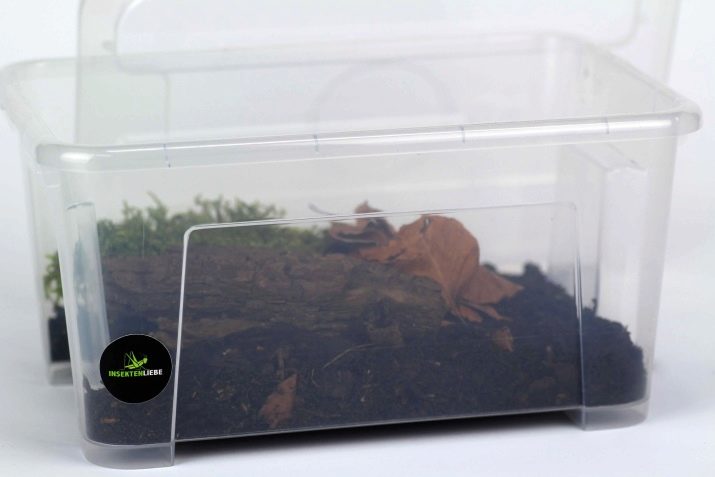
Typically, a 15-liter tank will require 15-20 holes on the lid. The edges of the holes must be sanded. For the sidewalls, a couple of holes on each side will be enough. If too many holes were made during the process, then the excess can be closed using any dense fabric, which will additionally create a shady corner in the tank.
To monitor the level of humidity and temperature in the tank, experts recommend placing a thermometer and hygrometer inside. As mentioned above, the temperature should range from 25 to 27 degrees. It is recommended to maintain the humidity level within the range of 75-90%. From time to time, it makes sense to slightly moisten the soil, as well as spray the insides of the walls.

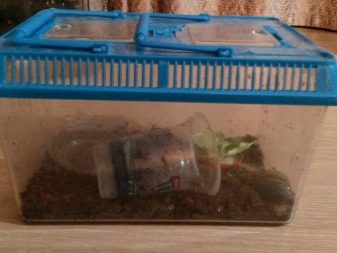
What kind of soil is needed?
The choice of soil mixture should be carried out in such a way that the snails feel comfortable in an artificially created environment.In addition, the soil is responsible for maintaining the required moisture level, as well as the ability for the snails to rest by burrowing into the soil. The soil options for snails are numerous. Coconut substrate is one of the most popular aquarium decorating solutions. It has a reasonable price, does not stain the walls of the tank, which preserves the aesthetic appearance of the latter, and also retains moisture.
Peat is also considered an affordable but effective option for maintaining moisture levels. The only condition is that it should not be used in its pure form.
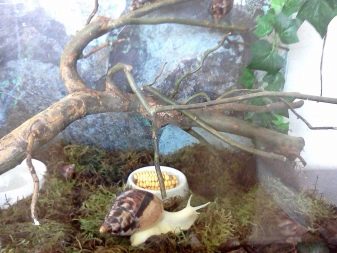

Moss shows itself well - it also works to maintain the required moisture level, and does not allow midges to develop. Ordinary soil for planting flowers and plants, in principle, can be used, but only if the composition is safe for Achatina and does not contain harmful chemicals or impurities. Additionally, you can place leaves on top of the soil, which snails use as bedding for rest.
It is strictly forbidden to use sand - it not only injures the body of the mollusk, but also clogs its esophagus. Sawdust is also quite dangerous for the same reason. Hard rocks can kill your pet if it crawls up the wall and breaks.
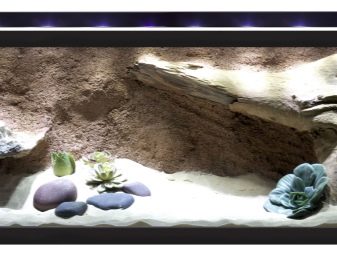

Forest soil, as a rule, is saturated with microbes, bacteria and even worms, which are dangerous for Achatina.
In principle, you can try to disinfect it first, but even in this case, a sad ending remains very likely. Having cleared the soil mixture from plant residues and roots, it will need to be kept for half an hour in an oven preheated to the maximum temperature.
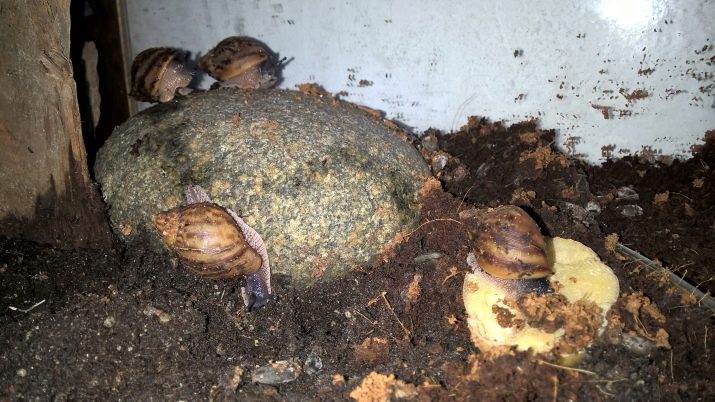
Home decoration
The design of the "house" of mollusks occurs with the help of plants, both live and artificial, and various decorative elements. The latter must be made from natural materials that are environmentally friendly for the health of the pet. Besides, it is important that there are no sharp edges and surfaces that could injure the molluscs.
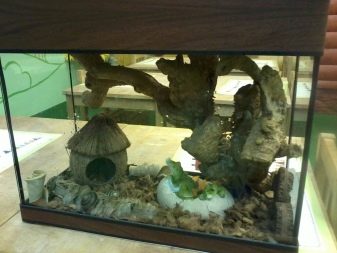
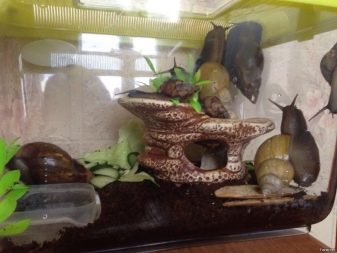
Plants and accessories
The design of the tank with snails allows you to realize the numerous creative ideas of the owners. You can decorate the space with a variety of branches, snags and cones, combined into unusual compositions. The components must be disinfected if we are talking about self-assembled objects, or simply purchased in a specialized store. You can also equip the tank with the use of beautiful moss - either decorative or forest. Again, the moss that is collected on your own must first be soaked for half a day in cool water, then doused with boiling water and, finally, placed on top of the ground.

It is easy to design a terrarium if you use a variety of ivy, ferns or rejuvenated.
Live variations are likely to be quickly nibbled by Achatina, so fake versions are recommended for long-term use. When choosing the components of the decor, it is important to abandon rigid and solid objects. A half of a coconut will also fit well as a decor. We must not forget that the arrangement of the “home” is impossible without placing a special bowl of clean water. Since snails prefer to swim in it, the container should be taken of medium size and has considerable stability.
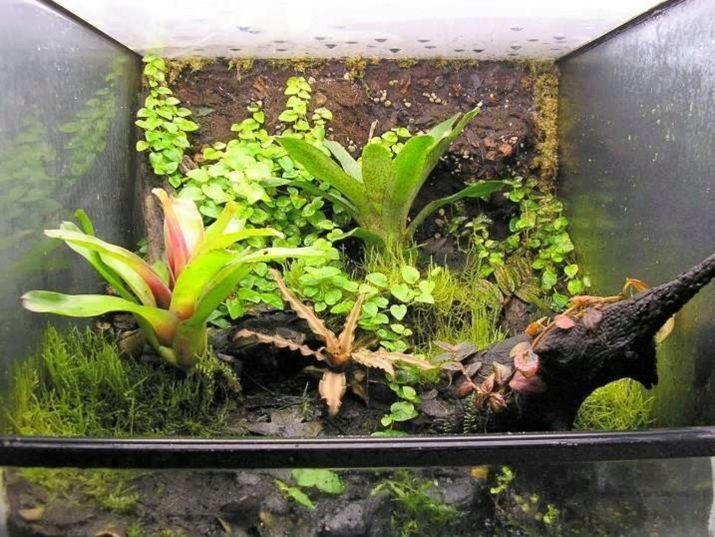
It is not recommended to use stones, clay grottoes, or decorative shells in the aquarium. All of these materials can damage the soft body of the clam, and even the shell.
These creatures do not need shelter, so excessive decor is likely to be harmful. From plants, experts recommend choosing succulents that look extremely stylish, but do not require any special care. The plants have a hard stem, which the Achatina will not be able to break. You can plant lettuce or pre-germinated wheat grains in your aquarium.Of course, after some time the snails will eat them, but for a certain period of time you will still be able to enjoy the unusual design.
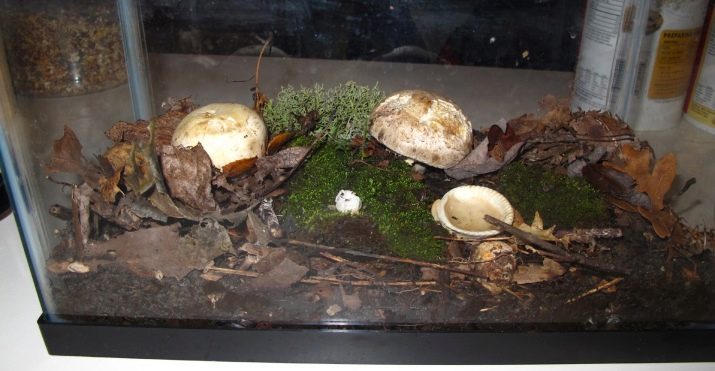
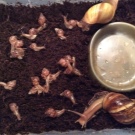
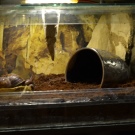
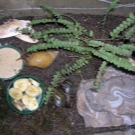


Where to put?
It is customary to place the snail tank in a dark part of the room, where the sun's rays do not fall. Exposure to the sun can lead not only to a violation of the required level of humidity inside, but also to overheating of the creatures themselves and their further illness and death. It is also important to ensure that the aquarium is located away from drafts or radiators. The container must be firmly anchored in the chosen location and protected from pets. General cleaning will have to be carried out at least once every couple of weeks, so access to the tank will have to be kept simple. For cleaning, it is required to use the safest means, devoid of chemical components that are harmful to the health of Achatina.
How to equip a snail terrarium, see below.









In general, worms are not dangerous for snails, they can even be put into the terrarium on purpose. And ivy is not recommended. About ventilation - it is advisable to make holes not in the lid, but on the walls.